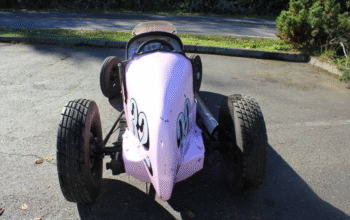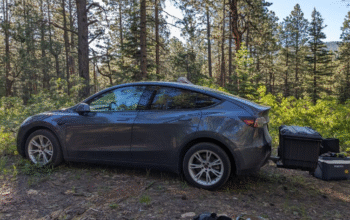Strange noises coing from your car can be both annoying and concerning. One of the most common sounds that drivers report is clicking when they are turning the steering wheel, especially if they are making a tight or sharp turn. Whether it is a light tick or a loud, repetitive click, it is often a sign that something in your car’s steering or suspension system needs to be repaired or serviced.
If the clicking sound happens only when you are turning the steering wheel, it is not something you want to overlook. Even if your car appears to drive fine right now, the clicking could merely be a symptom of wear that, if left unaddressed, could get worse and lead to unnecessary and more expensive damage later on.
In this article, we will go over what causes clicking noises when you are turing, how to diagnose the clicking noise, and what options are available for you to fix the clicking noise — assuming you are either a DIY person or just trying to get a handle on what your mechanic is trying to explain to you.
What Does a Clicking Noise While Turning Mean?
A clicking noise while turning usually points to one or more of the fllowing problems:
- Worn CV joints (constant velocity joints)
- Damaged axle shaft
- Loose or broken hubcaps
- Bad wheel bearings
- Suspension problems
- Steering system issues
The most common cause, especially in front-wheel-drive vehicles, is a worn outer CV joint. This joint allows the wheels to turn and move up and down with the suspension. When it wears out, it begins to make a rhythmic clicking noise — usually noticeable during tight turns.
When and Where You Hear the Clicking Matters
To help you (or a mechanic) pinpoint the issue, pay close attention to when and how the noise happens:
- Do you only hear it during left or right turns, or both?
- Is it louder during sharp or slow turns?
- Do you hear it only when accelerating while turning, or also when casting?
- Does the clicking speed up with your vehicle speed?
Taking mental notes of these patterns can sve time and make diagnosis easier.
Top Causes of Clicking Noises While Turning (And What to Do)
Let’s explore the most likely causes of that clicking sound and how to fix them:
1. Worn CV Joint (Most Common Cause)
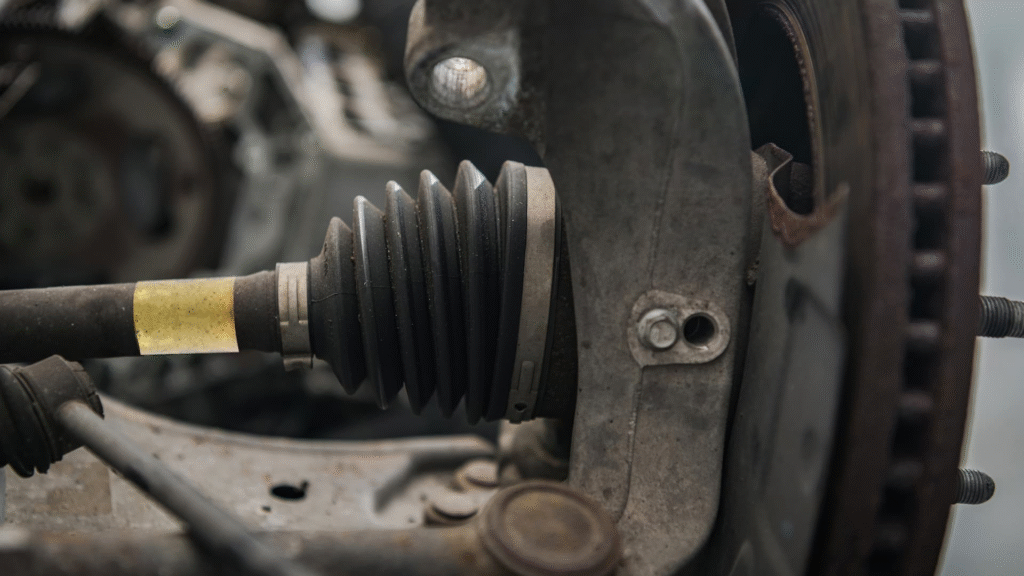
If you operate a front-wheel drive or all-wheel drive vehicle, the CV joints are essential to the driveline. If your CV joints start to wear out at some point, the rubber boot that protects the joints may become torn and allow grease to escape and dirt to enter the joint. Eventually, this all leads to joint failure.
Symptoms:
- Clicking noise while turning (especially during acceleration)
- Grease splattered on the inside of your wheel or along the underside of your vehicle
- Vibration or shaking during driving
What to do:
- Inspect the rubber boot on the CV joint for cracks or grease leakage.
- If the boot is intact, but the joint is clicking, the CV axle likely needs to be replaced.
- You can replace just the outer joint or the entire axle — the latter is often more cost-effective.
Cost:
DIY CV axle replacement can cost $50–$150 for parts. Professional repair typically ranges from $200 to $400 per axle.
2. Damaged Axle Shaft

If the clicking sound is accompanied by a clunk or bang, especially while accelerating and turning, your axle shaft itself may be worn or bent.
Symptoms:
- Clicking that gets worse under load
- Vibrations or clunking when accelerating
- Visible wobble in the wheel if the axle is severely bent
What to do:
- A bent or damaged axle shaft should be replaced as soon as possible.
- Continuing to drive on it may lead to further damage to the transmission or wheel bearings.
3. Loose or Broken Hubcaps
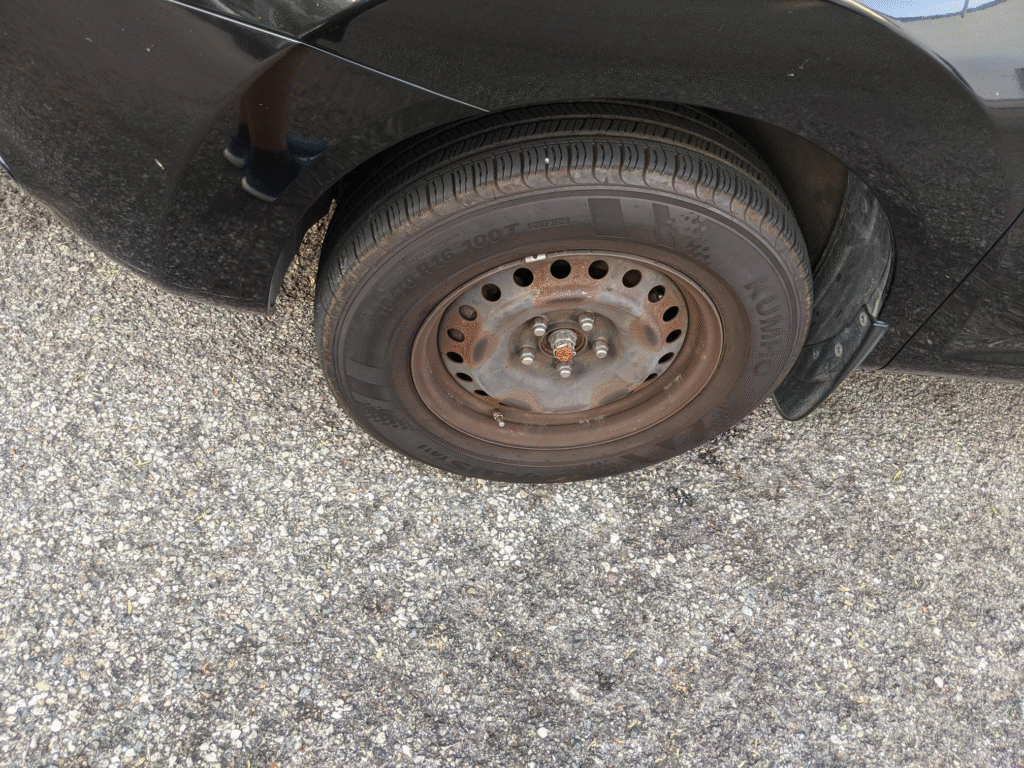
Sometimes, the clicking noise is as simple as a loose hubcap. These can shift or wobble while turning, especially if they’re made of cheap plastic.
Symptoms:
- Clicking or rattling only at low speeds
- Noise disappears if hubcap is removed
- Noise may be intermittent
What to do:
- Remove the hubcap and drive the same route to test it.
- If the sound goes away, the hubcap is your culprit. You can tighten it or replace it with a better-fitting one.
4. Faulty Wheel Bearings
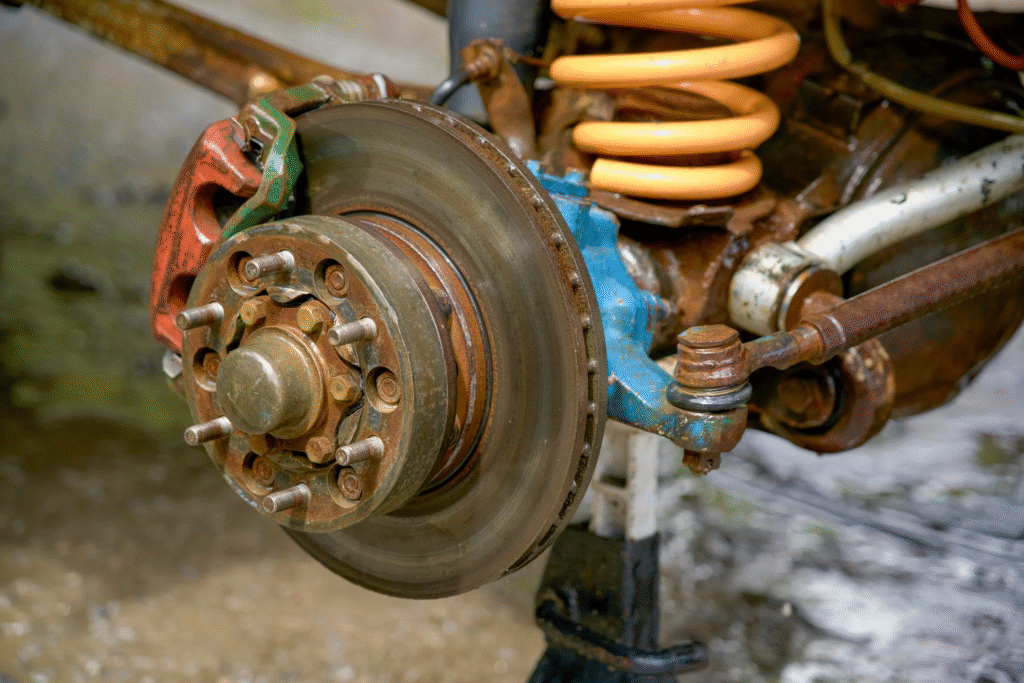
A failing wheel bearing can also produce a clicking or popping sound when turning. Though it’s less common than CV joint failure, it’s still a possible cause.
Symptoms:
- Clicking or grinding noise that changes with speed
- Steering feels loose
- Uneven tire wear
- Excessive wheel play (you can test this by jacking up the car and wiggling the wheel)
What to do:
- Replacing a wheel bearing requires a press and some skill — this job is often better left to a professional unless you’re confident with tools.
- If you want to try a DIY, ensure you have the correct hub assembly and torque specs.
5. Suspension Component Issues
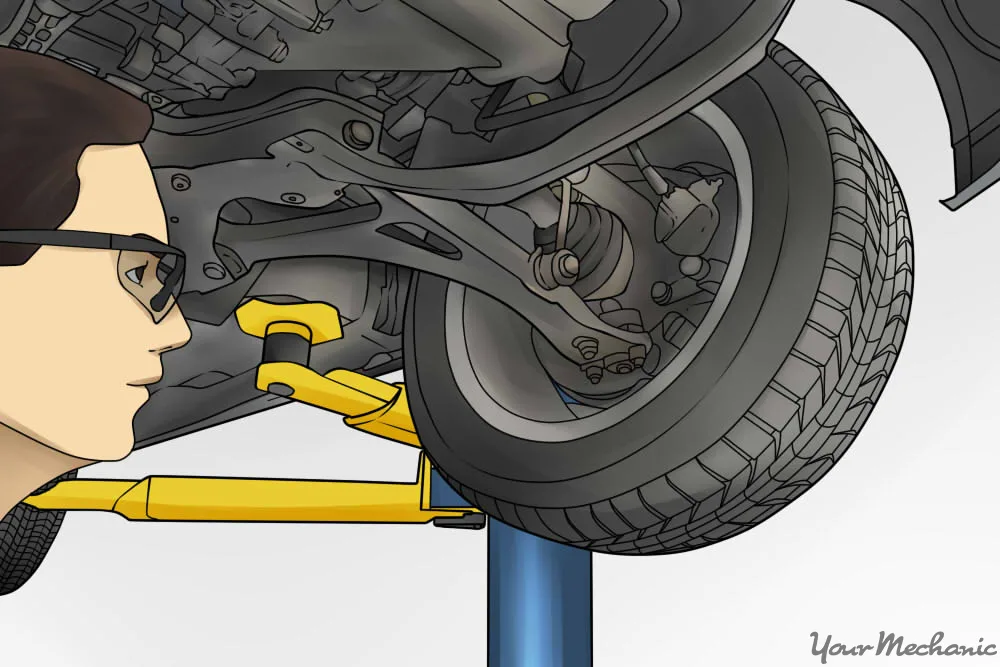
Your vehicle’s suspension consists of several moving parts (ball joints, sway bar links, bushings, and control arms). If any of these wear down or come loose, a clicking/knocking noise may occur while turning.
Symptoms:
- Noise when going over bumps or turning
- Uneven tire wear
- Wandering steering or poor handling
What to do:
- Inspect the front suspension visually for torn bushings or worn joints.
- Check for play in the sway bar links or ball joints using a pry bar.
- Replace any worn parts — many of these are affordable and available as bolt-on replacements.
6. Steering Rack or Tie Rod Issues
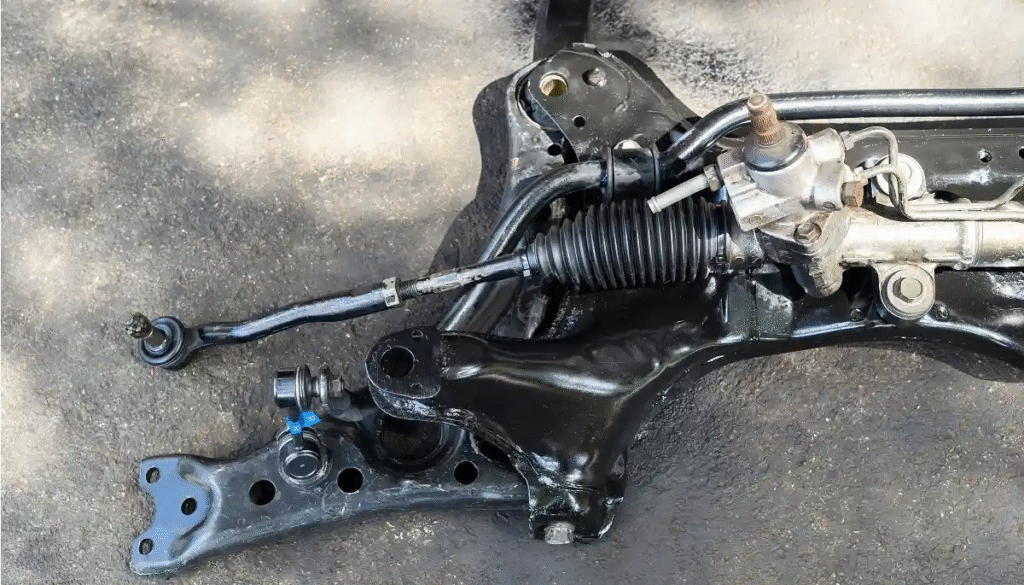
If the clicking noise is deeper and more “clunky,” the issue may be in the steering linkage. Worn tie rod ends or an aging steering rack can create noticeable sounds while turning.
Symptoms:
- Loose or unresponsive steering
- Clicking or knocking when turning the wheel
- Uneven tire wear
What to do:
- Jack up the car and grab the tire at the 3 and 9 o’clock positions. Wiggle it — if there’s play, it could be the tie rod ends.
- Replacing tie rod ends is a straightforward DIY fix, but you’ll need an alignment afterward.
DIY Tips for Diagnosing Clicking Sounds
If you want to troubleshoot before going to a mechanic, here are a few steps:
- Park the car and turn the wheel fully left and right. Listen closely — clicking without the engine running might help isolate the source.
- Drive in a tight circle in both directions. Note whether the clicking happens during left or right turns.
- Jack up the car safely and spin the wheel by hand. Listen for any clicking or grinding. Wiggle the wheel to check for loose components.
- Check the CV boots and axle for leaks or visible damage.
Always follow safety procedures when lifting your vehicle, and don’t get under a car supported only by a jack — use jack stands.
When to Visit a Mechanic
If you’ve completed the basic checks and the noise remains, it is time to go to a trusted mechanic. Clicking noises are usually a sign of progressive wear, not a one-off incident. If you do nothing, it will likely escalate to something more costly — like a broken suspension part or a damaged transmission.
Be prepared to describe:
- When the noise occurs (left/right turn, speed)
- How long it’s been happening
- Any other symptoms (vibration, pulling, loose steering)
This information will help the mechanic diagnose and fix the problem faster.
Final Thoughts
Clicking sounds when turning a vehicle may be annoying but it’s often the first signs of parts becoming worn. The most common problem usually is a worn out CV joint and is easy and fairly inexpensive to replace. However, don’t rule out damaged bearings, loose hubcaps or steering components.
Getting the problem identified when it is small and repairs are inexpensive, catches the problem before it escalates into a larger (and more costly) concern. Whether it’s just an interest in your vehicle or you’re a car enthusiast who repairs their own vehicles, knowing what you see when there is a sound like this, can only put you in better control of your vehicle’s safety and reliability.


